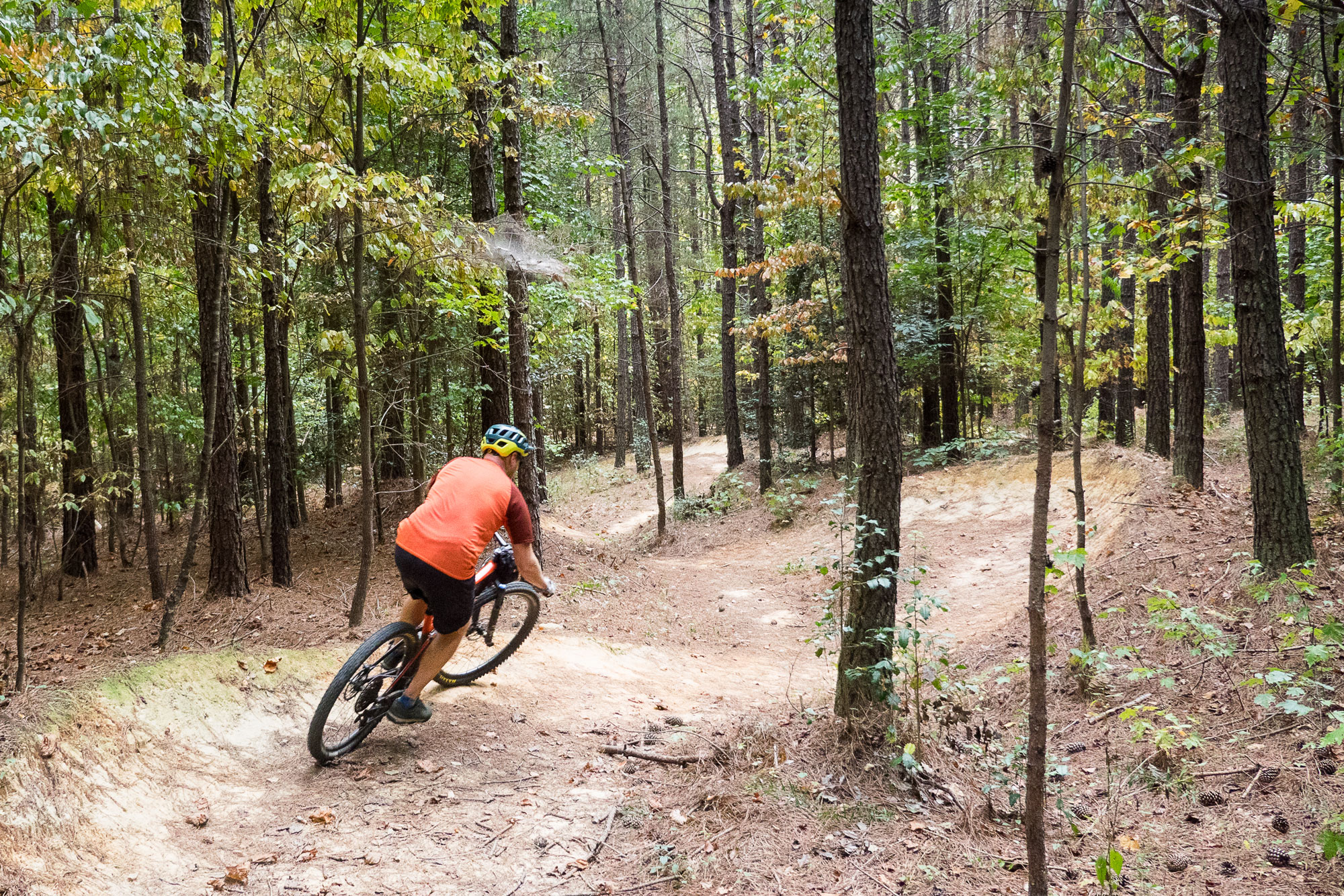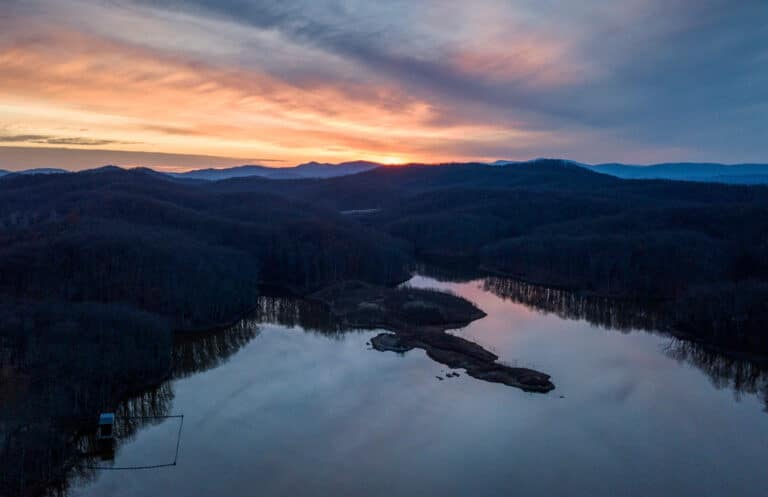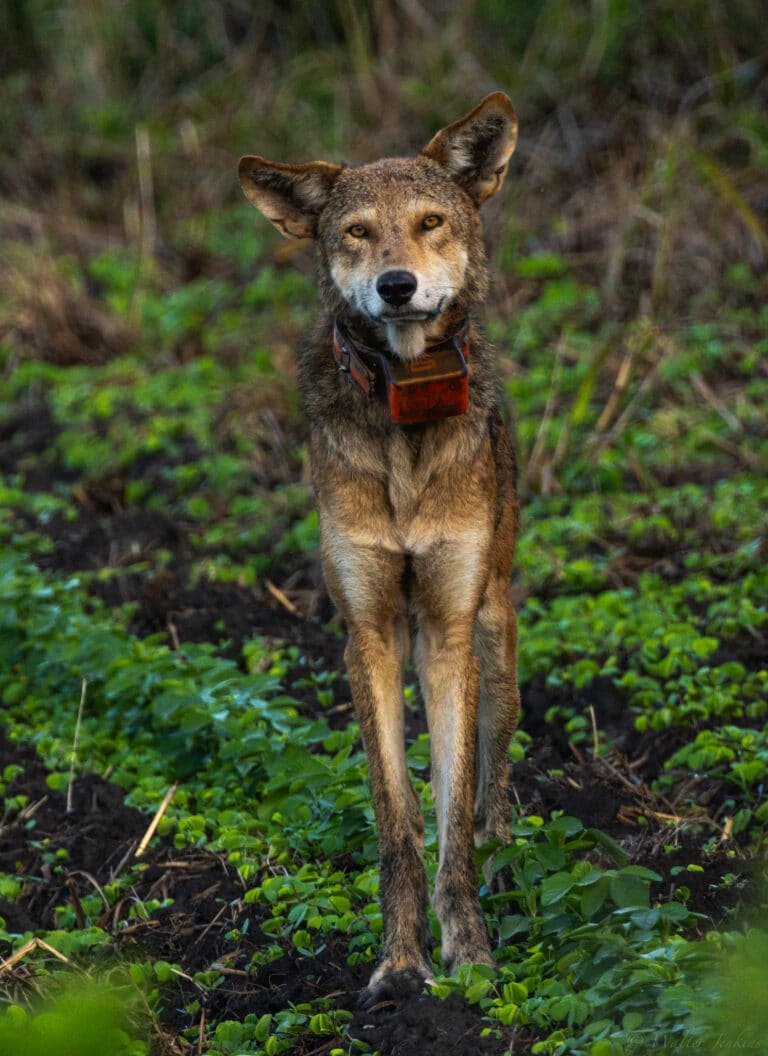A historic corner of the Appalachian Mountains in South Carolina is a hidden gem for outdoor adventures.
It was getting dark when I built my tent at Oconee State Park. My headlamp beam swung around the walk-in site, illuminating trees that cast long shadows across the quiet woods. While the campground’s drive-up sites were half full, this isolated tent area seemed completely empty. Kinda creepy, I thought, as I hustled to and from my truck, setting up.
It was a Tuesday night in early October, and this was uncharted territory for me—where the southeastern corner of the Appalachians overlaps with the northwestern corner of South Carolina. I’d dropped by the area years before to kayak the Chattanooga, but otherwise I didn’t know what to expect.
This would be my first stop on a three-week road trip full of mountain biking, gravel cycling, and whitewater kayaking. Despite a wide range of familiar places falling along the route, I decided to take a chance on somewhere new. Studying the map, I spotted an enticing name I vaguely recognized: Oconee.
Last year, my buddy Boberts had enjoyed camping at the state park and riding a partly completed mountain bike park nearby. Plus, I recalled something about naturalist William Bartram exploring the region during the late 1700s, when the Cherokee roamed these mountains. With limited time to plan, a quick online search confirmed that the campground connected directly to several bike trails.
Then I called up Boberts for beta. After some trail talk, I asked if his visit included any of the historic sites I was researching.
“Um no,” he said. “Mostly because I don’t care about historic sites.”
“Got it.” I laughed, knowing that’s not really true. “Guess I’ll just go see what’s there.”
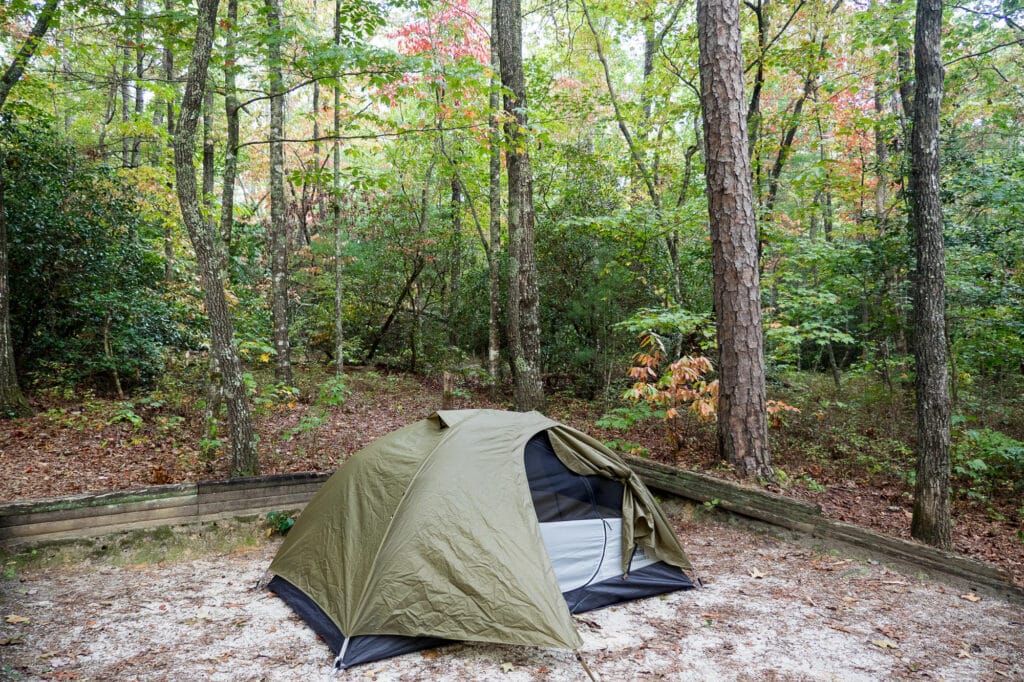
Stumphouse Mountain: A Bike Park and an Unfinished Tunnel
The next morning, I geared up for a full day on the bike. A backpack and two small bikepacking bags held repair kit, first aid, camera, food, and water. Then I rode circles around the campground, trying to find the trailhead. At one point, a maintenance man led the way in a speeding golf cart to the park’s Oconee Trail. After circling a pleasant pond, I ended up right back at my campsite. At least now I was oriented.
I found my way to the Ross Mountain Passage, a five-mile section of the Palmetto Trail, and turned south. This was my fourth section ride on this partially completed long-distance hiking and biking route, which runs for hundreds of miles across South Carolina from the coast to the mountains. Singletrack led to a gravel road which led to the paved Ross Mountain Road and one very aggressive pit bull-lab mix. The snarling dog blocked my way, so I snapped the brakes and tried to make friends. “Do you like sticks?” I asked innocently, gently plucking one from the shoulder.
The reply to my toss was an impulsive YES. But as the stick landed in yellow grass, the chasing dog halted and changed his answer to a furious IT’S COMPLICATED. The dog charged after me, but I was already gone.
Reaching an intersection a few miles later, I realized I’d missed the passage cut-off, and it was now behind the aggressive dog. Luckily, I only had to backtrack a half-mile to a brand-new gravel parking lot, with all 40 spaces empty on this Wednesday morning. Through gaps in the trees, I could see the smooth dirt and snaking berms of a freshly groomed trail.
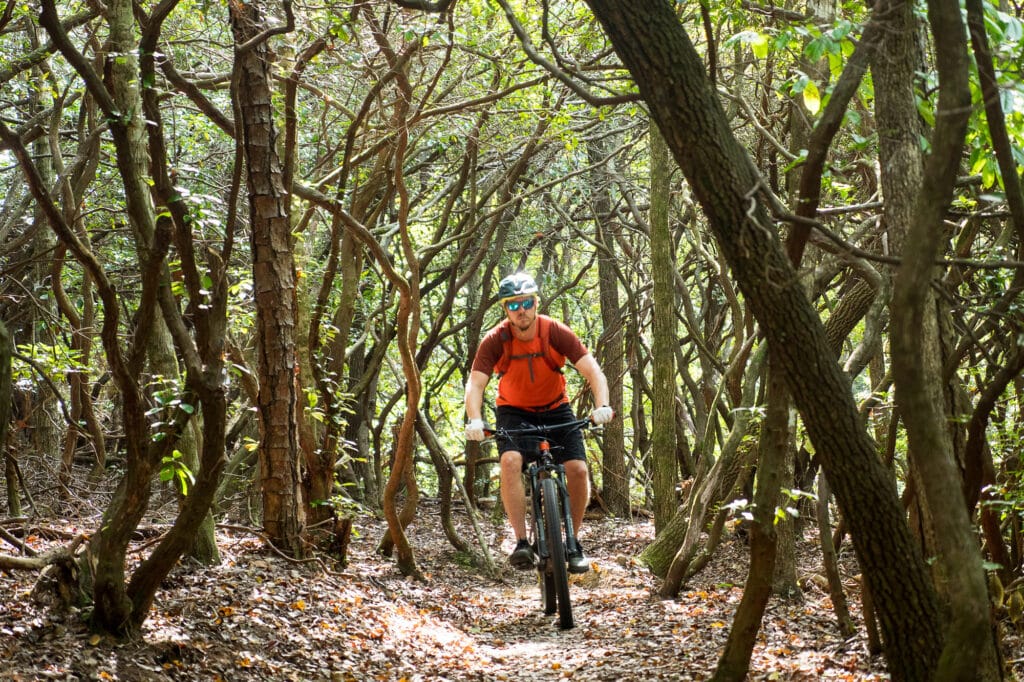
Stumphouse Mountain Bike Park did not disappoint. I started on the intermediate Boundary Trail, where I met a friendly local rider who explained the current trail system was 10 miles, and another 10 was almost complete. The system is a mix of trails, from beginner to advanced, from flow to technical, and I enjoyed bombing down the advanced Flow Trail, which had some great drops and jumps.
Coming out near the southern edge of the park, I detoured to the historic Stumphouse Mountain Tunnel. Like the trail system, the tunnel is part of Stumphouse Park, which is maintained by the nearby city of Walhalla. Tunnel construction began in 1856, with the goal of cutting a mile through the mountain for a railroad linking the port of Charleston with Knoxville. After three years, work had progressed only a quarter mile into the bedrock at a cost of $1 million. As the Civil War loomed, the project was abandoned. Today, visitors can explore the dead-end shaft on foot. I regretted not carrying a lock, given bikes aren’t allowed. I leaned mine against a bench, and hoped for the best as I walked inside. A couple wearing headlamps was returning, shining eerie beams of light through the darkness.
Afternoon was about biking the rest of the park. I rode the 1.5-mile Stumphouse Passage, my fifth section on the Palmetto, to the lower loop on Boundary. This led to two parallel downhill trails conceived as a dual slalom course. As I descended the finished trail, I glimpsed workers and backhoe operators from Black Diamond Designs building the second trail. My final lap took me past the shimmering Walhalla Reservoir. The foliage was beginning to turn, with pockets of yellow, orange, and red. A combo of Lake Loop and Entry Loop was mellow fun, and I encountered just the second biker I saw all day. A great park, and I look forward to returning when all 20 miles are complete.
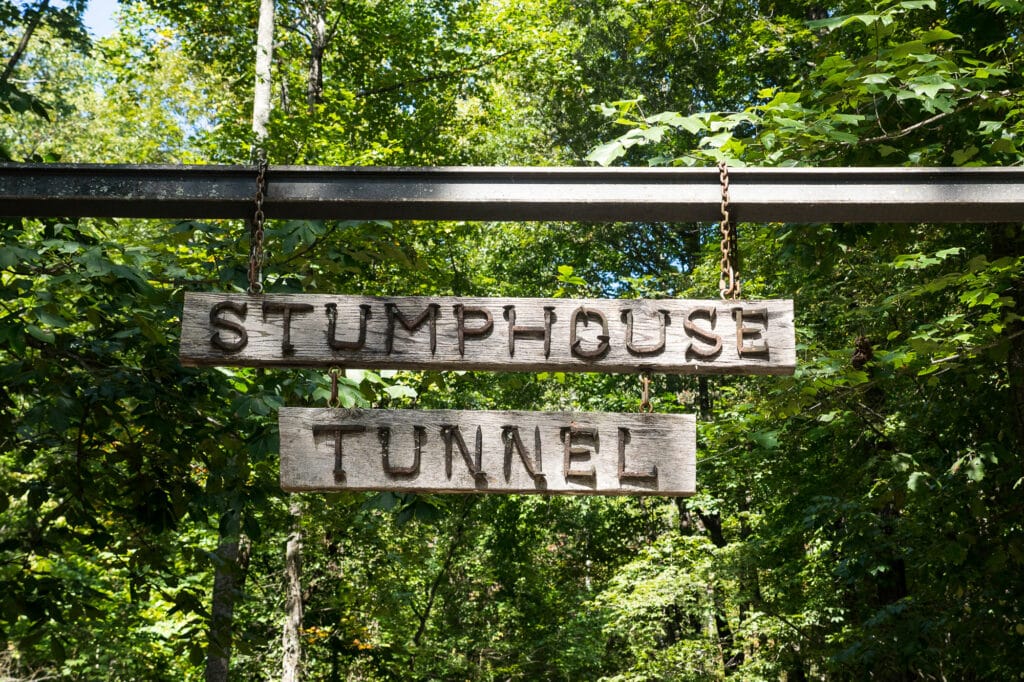
Walhalla, S.C.: A Developing Mountain Town
My visit was a quick one with just two nights to explore the mountain town of Walhalla. The first night I dropped by Trailhead Tavern, a popular bar and grill just off the main drag. Over a beer and burger at the quiet bar, I chatted with the staff about the region.
They confirmed something about Oconee I was beginning to suspect. There’s an early-fall low season here, much like other parts of the mountains. It’s the period in late September and early October when leaves begin to change but the trees remain mostly green. A scenic time after Labor Day when families have returned to their schoolyear routine. College kids are back in class. And leaf-peeping road tourists are in a holding pattern, waiting for the colors to peak. This is one of my favorite times for adventures.
On my second night, I stopped by the Garage Tap Room. There were only five of us, including the friendly owner, and everyone recommended an impressive bourbon barrel-aged stout. Over pizza, I learned that two microbreweries will open in Walhalla in the near future. Eventually, it was just the owner, his lifelong buddy, and me talking about the potential of the area.
“Let’s go to Last Chance,” suggested the friend.
“You wanna go with us to a biker bar?” asked the owner. “Everyone in town heads up there. You can hear what’s happening from the horse’s mouth.”
We each hopped into our pick-ups and drove up the mountain to the local dive. Sure enough, I was soon introduced to a dozen friendly residents eager to share the skinny on their up-and-coming town. The mountain bike park was being built to bring in adventure-travelers and help create businesses and jobs for younger townsfolk. The next step was figuring out more lodgings for visitors beyond Airbnb rentals and the aging state park, where I stayed in a campground built during the Great Depression.
“What about some type of glamping resort?” I asked. “Canvas tents, yurts, huts, camper hookups?”
At one time, someone explained, there had been talk around the quaint downtown about some kind of towering hotel with boutiques on the first floor. The word boutiques made us all shudder.
“By the time you come back it might be completely different,” mused another fella. “You may just want to move here.”
“I do already,” I said, and we all laughed and clinked bottles.
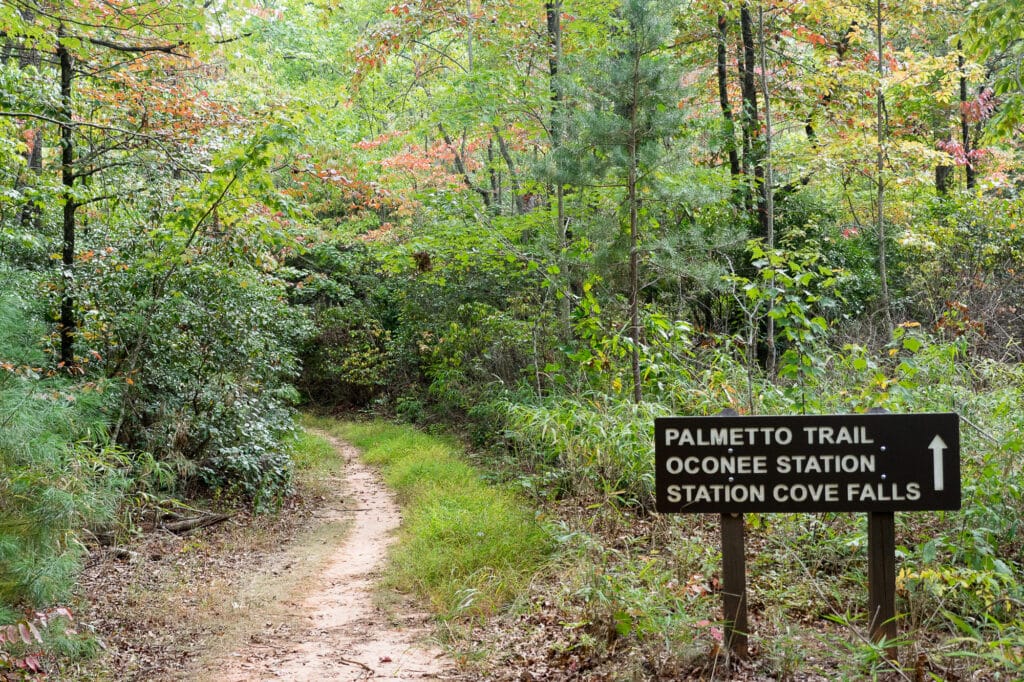
An Adventure Ride to Oconee Station
On my last day, I rode north on Ross Mountain Passage. Down in a creek gulch, I walked a side trail to an old waterwheel. Built by the CCC in the 1930s, it produced electricity during the construction of the state park. Soon I continued riding on the 3.7-mile Oconee Passage, which became my sixth section completed on the Palmetto Trail.
Earlier in the visit, I’d stopped by the visitor center, where one authoritative staffer had lectured that bikes are not allowed on the trail from the state park to Oconee Station. That is emphatically incorrect, but the staffer refused to discuss the matter. So I returned when she wasn’t there and spoke with a younger staffer who agreed they are allowed. Such misinformation is common in many up-and-coming places, where new users like mountain bikers begin exploring in ways that were previously assumed to be impossible or forbidden. While there are a few hike-only trails clearly marked around the area, the three Palmetto passages I rode on my visit are each open to bikes.
It turned out to be a great ride, taking me over Oconee Mountain on roughly the same forested path that William Bartram followed in 1775. Near the crest I spoke with a retired couple, two of only four hikers I saw that day. At the bottom, I walked the short creek-side trail to Station Cove Falls. Then I backtracked out to the road to reach my destination.
Oconee Station State Historic Site is a small park with a short nature trail and two historic structures. One is a stone blockhouse built in 1792, which served as a military outpost for seven years. The larger brick building was a private home and trading post built in the early 1800s. Of course, neither of these buildings was here when Bartram came through. Instead, he passed the ruins of the Cherokee lower town of Oconee, which was abandoned during the 1750s.
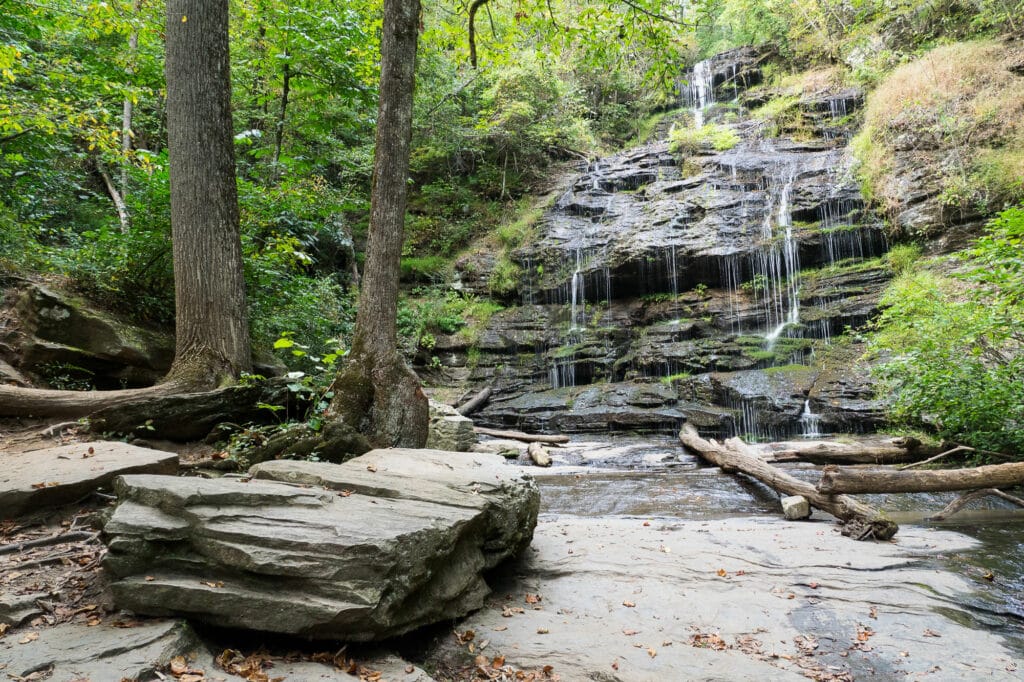
Inside the William Richards House, I met an enthusiastic young ranger who had recently become the site manager. She described big plans for the park, including expanding the trail system. Then she shared something extraordinary.
“We recently acquired the site of Oconee town,” she explained. “We’re working with the tribe to turn it into an archeological park.”
The long-term plan, in the five- to 10-year range, includes interpretive trails leading from the visitor center to the adjacent townsite. A great piece of news, and yet another reason to keep an eye on this developing area.
When I met up with Boberts the following weekend, I shared the photos and a positive trip report. Not just about the new bike trails but the historic sites, as well.
“That all looks awesome,” he said. “I need to go back there.”
Cover photo: A mountain biker rides on the fast-growing network of trails in and around South Carolina’s Oconee State Park. All photos by the author.
